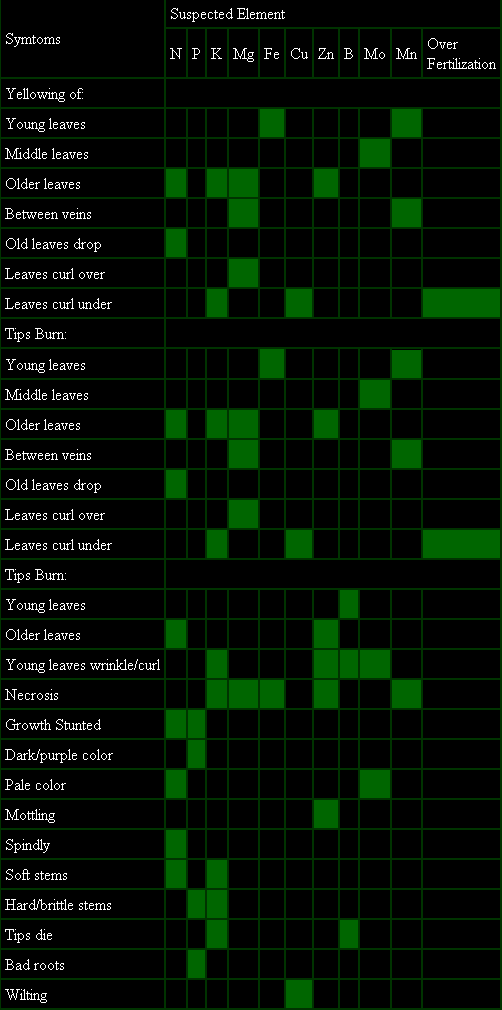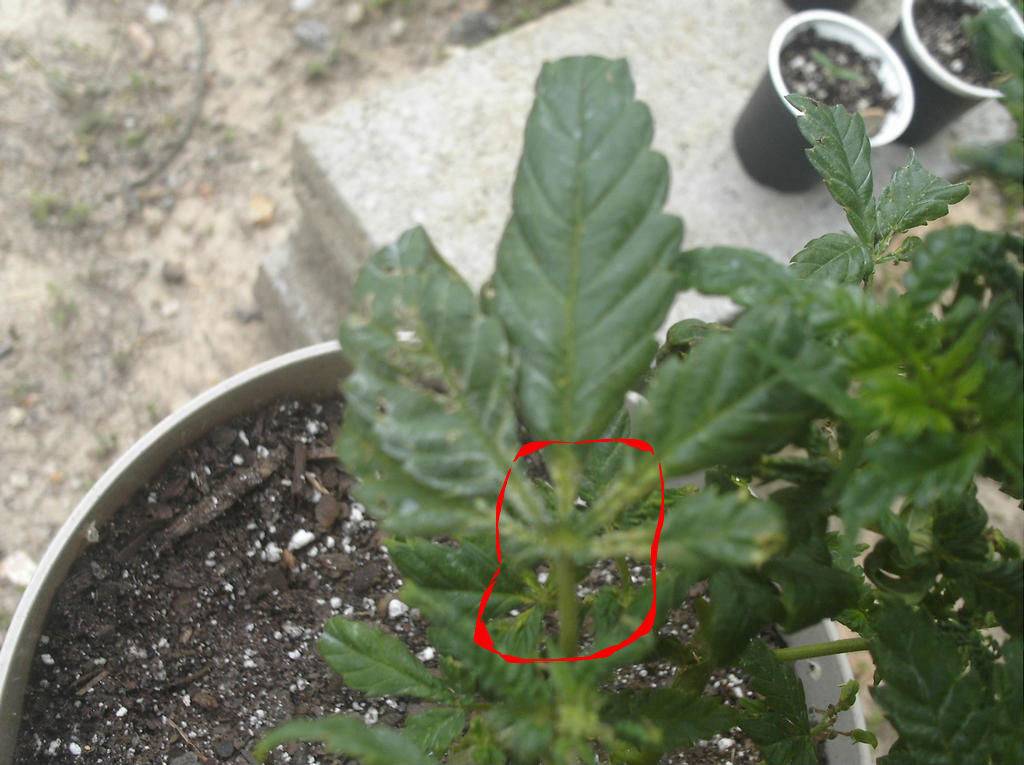4
You are using an out of date browser. It may not display this or other websites correctly.
You should upgrade or use an alternative browser.
You should upgrade or use an alternative browser.
cant really see whats going on there. Need some more info. Tell us everything about your grow.
4
420tyme
its in mg soil mixed with some perlight
its outside sitting on top of a bucket
no nutes ,
just plain water
the mg says feeds up to 3 months
that's why i haven't given any extra nutes , and just water
its outside sitting on top of a bucket
no nutes ,
just plain water
the mg says feeds up to 3 months
that's why i haven't given any extra nutes , and just water
That does not look like insect damage. Can you take a beter pic?
do you have a cat?
Herbsman_OS
Member
Might be caterpillars.
I don't think that is cat or large critter damage.
Over fertilized...

Over fertilized...
wonder what made the holes in the leaves
I agree with Stress on the overfeeding. Looks a bit over watered too.
I agree with Stress on the overfeeding. Looks a bit over watered too.
Hey guys, folks,
Some of us have been diagnosing plants for awhile and the basics of it we learned from the charts like the one above. We didn't have the resources available then like ICMag, we had to follow those charts and KISS and learn.
So keep it simple stoners and follow the charts.
Some of us have been diagnosing plants for awhile and the basics of it we learned from the charts like the one above. We didn't have the resources available then like ICMag, we had to follow those charts and KISS and learn.
So keep it simple stoners and follow the charts.
You mean the one that says Cu instead of Ca? just kidding.
just kidding.
Are you saying too much ferts ate holes in the leaves?
Are you saying too much ferts ate holes in the leaves?
4
420tyme
What are creating those holes my my leaves
What bug eats them like that ?
What bug eats them like that ?
I say we put a motion camera up and catch those Rascally Kitty's in action.
What are creating those holes my my leaves
What bug eats them like that ?
I'm sorry for not clarifying more in my first post but I decided to do some research first, just to be sure.
My first thoughts about the damage is that a cat or large rodent will usually tear the leaves as well.
But what caught my attention is the center of the leaves when the fingers join, and how the ALL appear to be deformed.
That is typical of major over-watering, deficiencies, or TMV.
TMV will usually cause growth to be deformed and kinda twisted. It doesn't show any other tattle tail signs of TMV so with that eliminated: We're left with over-watering and deficiencies.
The holes out in the flesh of the leaves looks more like snail or slug damage. Except that there are none of the tiny drops of snail poop that they leave behind. And the slime trails a slug would leave don't appear to be present. At least not visible in the photos.
4
420tyme
I'm sorry for not clarifying more in my first post but I decided to do some research first, just to be sure.
My first thoughts about the damage is that a cat or large rodent will usually tear the leaves as well.
But what caught my attention is the center of the leaves when the fingers join, and how the ALL appear to be deformed.
That is typical of major over-watering, deficiencies, or TMV.
TMV will usually cause growth to be deformed and kinda twisted. It doesn't show any other tattle tail signs of TMV so with that eliminated: We're left with over-watering and deficiencies.
The holes out in the flesh of the leaves looks more like snail or slug damage. Except that there are none of the tiny drops of snail poop that they leave behind. And the slime trails a slug would leave don't appear to be present. At least not visible in the photos.

I transplanted it into the ground today
and when i dumped it out the pot the bottom was overly saturated
so that def that you circled is a sign of over watering ?
Also i looked and i do not see any snail or slugs anywhere around
In my experience, if a snail or slug or even a caterpillar spends enough time on a plants to do that much damage, they leave behind trails and tiny lil black spots of poop.
I can't see any torn or shredded leaves like a cat would usually leave from chewing. A rodent or a rabbit, or even a deer would eat from the outer edges, or devour portions of the plant.
Eliminating predators it narrows the field to the obvious symptoms:
(although I do see a couple ares of light colored spotting that could indicate spider mites on the large leaf in the center and the smaller leaf far left below the cup.)
TMV: Can cause similar damage in severe or late stages. But TMV so severe would also be warping the veins of the leaves on new growth, and causing brown, burned looking areas on older leaves which look like a late stage Phosphorus deficiency. The dead areas will sometimes soften and wash or blow away leaving holes similar to those on your plants.
So that leaves nutrient deficiencies, over-watering or overdose:
The leaves are all curling under which is an indication of over fertilization.
The shriveled leaf indicates over-watering.
It does happen all the time where people get a deficiency in plants that are overdosing, and deficiencies and over-watering go hand in hand. But plants with deficiencies have leaves that curl up.
So like I said, the path of least resistance is the obvious. Follow the charts and the path of least resistance.
I can't see any torn or shredded leaves like a cat would usually leave from chewing. A rodent or a rabbit, or even a deer would eat from the outer edges, or devour portions of the plant.
Eliminating predators it narrows the field to the obvious symptoms:
(although I do see a couple ares of light colored spotting that could indicate spider mites on the large leaf in the center and the smaller leaf far left below the cup.)
TMV: Can cause similar damage in severe or late stages. But TMV so severe would also be warping the veins of the leaves on new growth, and causing brown, burned looking areas on older leaves which look like a late stage Phosphorus deficiency. The dead areas will sometimes soften and wash or blow away leaving holes similar to those on your plants.
So that leaves nutrient deficiencies, over-watering or overdose:
The leaves are all curling under which is an indication of over fertilization.
The shriveled leaf indicates over-watering.
It does happen all the time where people get a deficiency in plants that are overdosing, and deficiencies and over-watering go hand in hand. But plants with deficiencies have leaves that curl up.
So like I said, the path of least resistance is the obvious. Follow the charts and the path of least resistance.
I think its just necrosis from a deficiency, What is the PH of the runoff?
4
420tyme
In my experience, if a snail or slug or even a caterpillar spends enough time on a plants to do that much damage, they leave behind trails and tiny lil black spots of poop.
I can't see any torn or shredded leaves like a cat would usually leave from chewing. A rodent or a rabbit, or even a deer would eat from the outer edges, or devour portions of the plant.
Eliminating predators it narrows the field to the obvious symptoms:
(although I do see a couple ares of light colored spotting that could indicate spider mites on the large leaf in the center and the smaller leaf far left below the cup.)
TMV: Can cause similar damage in severe or late stages. But TMV so severe would also be warping the veins of the leaves on new growth, and causing brown, burned looking areas on older leaves which look like a late stage Phosphorus deficiency. The dead areas will sometimes soften and wash or blow away leaving holes similar to those on your plants.
So that leaves nutrient deficiencies, over-watering or overdose:
The leaves are all curling under which is an indication of over fertilization.
The shriveled leaf indicates over-watering.
It does happen all the time where people get a deficiency in plants that are overdosing, and deficiencies and over-watering go hand in hand. But plants with deficiencies have leaves that curl up.
So like I said, the path of least resistance is the obvious. Follow the charts and the path of least resistance.
I sprayed some neem oil on it the other day because i noticed spider mite webs
Sorry for my ignorance
but what is TMV ?
I think its just necrosis from a deficiency, What is the PH of the runoff?
idk what it is
i was just giving it plain tap water from my faucet
But its been transplanted in the ground off in the woods
so now its just gonna get rain water and creek water when needed
idk what it is
i was just giving it plain tap water from my faucet
But its been transplanted in the ground off in the woods
so now its just gonna get rain water and creek water when needed
Try to get an idea of what the PH of your water is at the bare minimum,
even if you just use some litmus strips or PH drops from the aquarium store.
certain nutrients get locked out at certain PH ranges, causing symptoms like you're seeing. It may be as simple as just adding some course dolomite as a top dressing to your planting site.
4
420tyme
Ok
i just checked the ph from my tap and its 8.0
iv heard in hydro that you want it around 5.8
but i also heard that when growing in soil the ph did not really matter
But their not going to be getting my tap water anymore cuz its directly in the ground now off in the woods
so it will just get rain water and creek water when need be
do i need to see what the ph is in the creek ?
i just checked the ph from my tap and its 8.0
iv heard in hydro that you want it around 5.8
but i also heard that when growing in soil the ph did not really matter
But their not going to be getting my tap water anymore cuz its directly in the ground now off in the woods
so it will just get rain water and creek water when need be
do i need to see what the ph is in the creek ?


